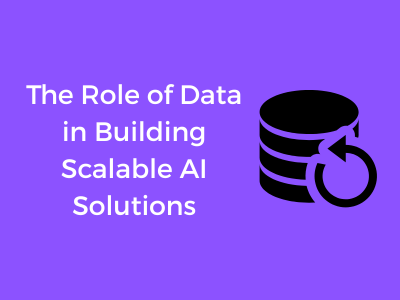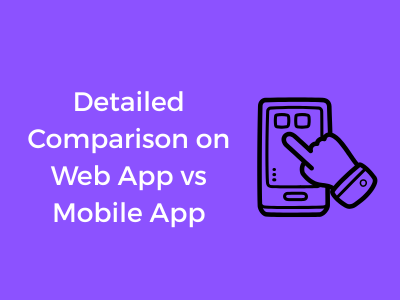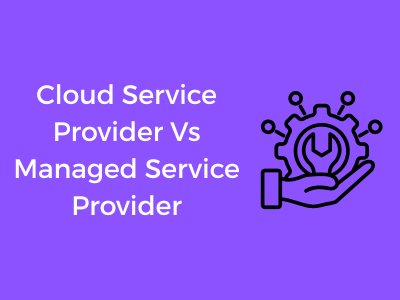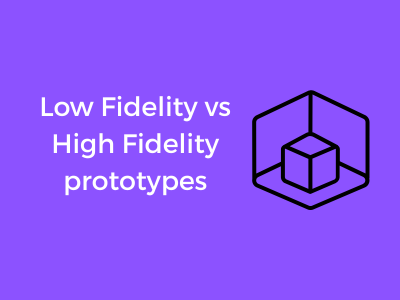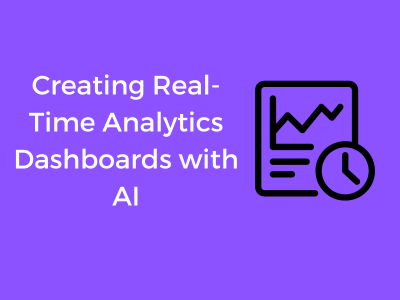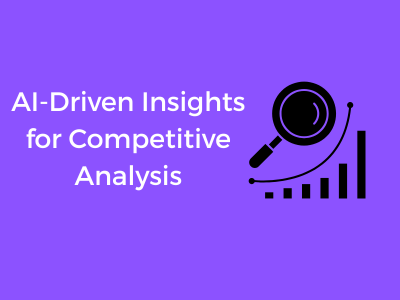Hey there! Let’s dive into the fascinating journey from mere numbers to groundbreaking intelligence. If you’ve ever wondered how artificial intelligence (AI) transforms raw data into powerful insights, buckle up, because we’re talking about the very foundation that makes scalable AI solutions possible.
What Are Raw Numbers Anyway?
At the heart of every intelligent AI system is something humbly simple: plain numbers. Think about all the data collected globally—sensor readings, website clicks, customer reviews, weather patterns…the list goes on. This initial, unprocessed data isn’t particularly useful on its own. It’s like having a giant bucket of LEGO blocks—potentially amazing, but only if correctly assembled.
The magic happens when these raw numbers are turned into something meaningful. This alchemy is the first step in moving toward scalable AI solutions that can support businesses, revolutionize industries, and maybe even make your life a bit easier.

The Importance of Smarter Foundations
Building scalable AI isn’t about dumping random numbers into an algorithm and hoping for the best. High-performing AI models need a solid foundation, much like constructing a skyscraper. That foundation starts with:
- Collecting Relevant Data: Just because you can gather data doesn’t mean you should. The numbers need to be purposeful and aligned with your problem.
- Contextual Understanding: Numbers mean different things in different scenarios. For example, 10 degrees Celsius could signify something completely different depending on whether it’s about climate data or an industrial freezer.
- Ensuring Data Accuracy: AI models thrive on high-quality inputs. Garbage data equals garbage output, no matter how sophisticated the algorithm.
So, What Happens Next?
When these raw numbers are fed into an AI system, the magic begins. Algorithms start interpreting, analyzing, and learning patterns. This process involves multiple layers: identifying trends, spotting anomalies, and making predictions. It’s like tuning a radio station; the noise is filtered out, leaving you with clear and actionable insights.
The best part? AI doesn’t just stop there—it learns and adapts! The more refined and relevant your data becomes, the more “intelligent” your models can get.
Why Scale Matters
Picture this: A small business uses AI to analyze customer habits and improve products. As the business and its customer base grow, the AI must scale up too—it has to sift through a larger sea of numbers while maintaining speed and accuracy. Without scalable foundations, the system may quickly hit limitations and crumble under pressure. That’s a big no-no for anyone who wants their AI solution to keep delivering value.
This is where scalable AI really shines. Whether you’re managing social media analytics or powering breakthrough medical research, focusing on raw numbers as a starting point—while preparing for system growth—is key to long-term success.

Why Quality Beats Quantity in Data Collection for AI
When it comes to artificial intelligence (AI), there’s a common misconception that more data always equals better AI models. But let me tell you—a mountain of data isn’t worth much if it’s riddled with poor quality. Smartly curated, high-quality data is the way to go. Let’s explore why quality absolutely trumps quantity in data collection for AI. Buckle up for some insightful tips and practical advice!
It’s All About Accuracy, Not Just Volume
Think of AI as a chef and data as the ingredients. If you give the chef spoiled or mismatched ingredients, no matter how talented they are, the end dish isn’t going to amaze anyone! Similarly, poor-quality data can cause AI algorithms to stumble. Clean, accurate datasets, on the other hand, empower AI to make precise predictions and decisions.
Here’s an example: Imagine you’re building an AI system to sort fruits into categories like apples, oranges, and bananas. If your dataset contains mislabeled or blurry images, the AI won’t “learn” correctly. Worse, errors in classification could cascade, snowballing into larger inaccuracies.
Quality Data Reduces Bias
Let’s get real—bias in AI is a big deal. It’s often the result of low-quality or unrepresentative data. Skewed datasets containing stereotypes or one-sided information can lead AI systems to make flawed, unfair decisions. For instance, building an AI hiring tool with an unrepresentative pool of data—let’s say biased toward one gender or race—could perpetuate inequality.
A well-curated dataset, diverse in its representation, significantly reduces the chances of introducing bias into your AI solution. This is why it’s not about collecting data for the sake of quantity but gathering a diverse and balanced dataset to begin with.
Efficiency Matters (A Lot!)
Large datasets can be overwhelming for AI algorithms to process. More data means more consumption of computational power, which can stretch budgets and timeframes. However, when your data is high-quality, your AI doesn’t have to wade through volumes of noise. Instead, it can focus on learning from relevant, meaningful patterns.
Efficiency becomes particularly important for startups or organizations with limited resources. Why spend extra time and energy on storing and processing millions of messy data points when a smaller, cleaner dataset will do the job better? Smart resource allocation starts with smart data choices.
How to Prioritize Data Quality
So, now that we know why quality matters, how do we ensure we’re collecting gold-standard data? Follow these simple yet effective tips:
- Always validate your data sources: Make sure your data comes from reputable and unbiased sources.
- Keep it relevant: Rather than indiscriminately gathering data, focus on what’s closely tied to your AI model’s purpose.
- Audit regularly: Periodically inspect your datasets for inconsistencies, duplicate entries, or labeling errors.
- Lean on human expertise: While automation can help with data collection, human judgment is often crucial for handling nuances.
The Bottom Line: Quality Equals Scalability
High-quality data isn’t just the centerpiece of effective AI; it’s the secret to building scalable solutions. When your AI journeys are powered by solid data foundations, you’re setting yourself up for sustainable success. Remember: Don’t obsess over quantity. In the world of AI, less can truly be more—provided it’s the right kind of “less”!
Understanding the Difference Between Structured and Unstructured Data
When you’re building a scalable AI model, it’s like constructing your dream home—you need the right materials and a clear blueprint. When it comes to data, you’re essentially working with two main types of “building blocks”: **structured data** and **unstructured data**. Understanding how each plays a role can elevate your AI project to the next level.
So, What’s Structured Data?
Structured data sounds fancy, but you’ve seen it countless times: neatly organized rows and columns in a database or spreadsheet. Think of all those tables filled with customer names, age, email addresses, and purchase histories. It’s the kind of data that’s easy to sort, search, and analyze because it follows a clear, predefined format.
Structured data works like a well-organized library system; you can locate the exact book (or data) without breaking a sweat. For example:
– **Databases:** SQL-based platforms efficiently manage sales records, employee rosters, and more.
– **Numeric values:** Anything from product prices to customer ratings fits in perfectly.
AI models, particularly those focusing on tasks like forecasting or classification, thrive on structured data because it’s clean and ready for analysis.
But What About Unstructured Data?
Now, let’s talk about unstructured data. It’s the rebel of the data world—free-spirited and creative, but often harder to manage. This kind of data doesn’t fit into those neatly organized rows and columns. Instead, it’s scattered across text documents, videos, images, social media posts, audio recordings—you name it!
For instance:
– Conversations in chatbot logs? That’s unstructured.
– Customer reviews written in paragraph form? Also unstructured.
– Thousands of hours of footage for video AI models? You guessed it—unstructured.
While more chaotic, unstructured data holds immense value, especially in modern AI applications like **natural language processing (NLP)**, **image recognition**, and **sentiment analysis**. However, it takes much more effort to extract meaningful insights from this type of data. You’ll likely need advanced tools, algorithms, and lots of preprocessing.
How Do You Choose What Works Best?
Here comes the million-dollar question—and no, it doesn’t have a one-size-fits-all answer. Your choice between structured and unstructured data (or a combination of both) depends on your specific AI goal. Here’s how to make better decisions:
1. **For Predictive Models or Metrics Tracking**: Lean toward structured data. It’s precise and faster to work with.
2. **For Personalization or Creative Outputs**: Harness unstructured data. Social media feeds, photos, or customer feedback could be a gold mine.
3. **Scaling Needs**: As your AI model grows, mix them strategically. Structured data can help you establish a baseline, while unstructured data can adapt to emerging trends.
The Key: Balance and Integration
Here’s a neat trick for scalability—don’t choose one over the other. The future of AI success lies in **integration**. Imagine analyzing both structured sales reports alongside customer sentiment from unstructured Facebook comments. Together, they create a story rather than just numbers.
Practical Advice for Growth
Navigating structured vs. unstructured data can feel overwhelming initially, but you don’t have to do it alone. Here are a few pointers to keep your data game strong:
– Embrace automation tools: Platforms like TensorFlow or Apache Spark can streamline data integration.
– Invest in storage solutions: Scalable cloud options are useful for managing unstructured data volumes.
– Collaborate across teams: Data scientists and domain experts can bring unique insights into what matters most for structured and unstructured datasets.
The Role of Preprocessing: Cleaning and Preparing Data for AI
Imagine trying to bake a cake with ingredients that are still in their raw, unmeasured state. Would that really work out? Probably not, right? That’s pretty much how AI feels if it’s given unprepared, chaotic data to work with. Let’s dive in and learn why preprocessing is the unsung hero of effective AI—and how you can tackle it like a pro!
What Is Preprocessing and Why Is It Important?
Simply put, preprocessing is the art of grooming your data. Data, in raw form, can be messy—think missing entries, inconsistent formatting, duplicates, or just plain irrelevant noise. If left unchecked, this “dirty data” can confuse your AI and lead to unreliable results. Preprocessing ensures that the data fed into your model is clean, structured, and optimized for learning.
Good data preprocessing doesn’t just make the AI smarter—it saves you time and resources. Clean data means faster training times, fewer errors, and a model that performs accurately when applied to real-world tasks. It’s truly the foundation upon which AI success is built.
The Key Steps in Preprocessing
If you’re wondering how to transform raw data into AI-ready material, here’s a step-by-step breakdown:
- Data Cleaning: This is about removing garbage—incorrect, missing, or duplicate data. For example, if a column of age data has entries like “???” or “N/A,” those inconsistencies must be handled strategically. Some might need to be fixed, while others should just be removed entirely.
- Normalization/Scaling: AI models work more effectively when numerical data is scaled into a consistent range. Think of it like leveling the playing field. For instance, you wouldn’t want measurements in kilograms mixed with measurements in pounds—it creates confusion!
- Encoding Categorical Data: Many datasets have text-based categories (like “red,” “blue,” or “green”). But AI models don’t inherently understand text—numbers are their language. Preprocessing translates these categories into numerical codes without losing their meaning.
- Feature Selection and Engineering: Not all data is relevant. Sometimes, less is more! Certain features in your dataset may add more noise than value, so careful selection ensures you only include what truly matters. Additionally, you can create “new” features from raw data, combining or modifying elements to give your model an extra edge.
- Handling Outliers: Ever find a wildly different data point, like a salary listed as $10 million in a dataset of typical employees? These outliers can skew your model. During preprocessing, you’ll need to decide if these outliers are errors, or if they tell an important story that your model should know about.
Don’t Forget Automation: Tools and Techniques to Make Preprocessing Easier
Manually cleaning and organizing data can get cumbersome, especially if you’re working with hundreds or thousands of data points. That’s where tools like Python libraries (e.g., Pandas, NumPy, Scikit-learn) come to the rescue. These frameworks make it easier to clean, transform, and prepare your data in a systematic way. Many AI platforms also have built-in preprocessing features that can help you stay on top of the game.
Building Resilient Data Pipelines for Scalable AI Success
Hey there! Imagine trying to build a sandcastle but having a leaky bucket to carry your water. That’s what creating scalable AI solutions feels like if you don’t set up robust data pipelines. A well-built data infrastructure is absolutely essential if your AI systems are going to grow and thrive. Let’s dive into what makes these pipelines tick and how you can make yours future-proof!
What Are Data Pipelines, Really?
Think of data pipelines as the “plumbing” for your AI system. They automate how raw data is collected, moved, and processed so it can be fed into your AI models. The goal? Ensure your data gets to the right place, in the right form, without bottlenecks.
Here’s a simple way to break it down:
- Input: This is where raw data is captured. It might be customer interaction logs, machine sensors, or social media feeds.
- Transformation: The data is cleaned, normalized, or enriched to make it usable. (Garbage in, garbage out, right?)
- Output: The processed data is stored or sent directly to your AI model for training or making predictions.
The magic lies in making this flow seamless across massive datasets, not just now, but as your system scales up.
Key Ingredients for Scalable Data Pipelines
If you’re building an AI solution, you’ll want pipelines with long-term performance in mind. Here are the critical components to focus on:
- Automation: Convincing AI models to work efficiently isn’t a one-time job. Data is constantly updated, and dynamic pipelines automate repetitive tasks like processing and integrating new datasets.
- Scalability: As your business grows, your data inflow might multiply fivefold, or even fiftyfold. Choose infrastructure that can scale horizontally by adding new processing nodes or vertically with more powerful cloud instances.
- Monitoring and Debugging: Even the best systems hit a snag. Comprehensive monitoring tools help detect anomalies and troubleshoot hiccups, from lagging pipelines to unexpected data inconsistencies.
- Modularity: A modular design means you can tweak parts of the pipeline without reworking the entire system – saving you time and potential headaches.
How Cloud Ecosystems Supercharge Scalability
What’s the secret weapon in building scalable AI data pipelines? Look no further than cloud platforms! Why? Because they bring power, flexibility, and cost efficiency to the table.
They provide services like managed data lakes, real-time streaming tools, and auto-scaling features – meaning you don’t need to build everything from scratch. Platforms like AWS, Azure, and Google Cloud let you start small, pay for what you use, and expand effortlessly as your AI ambitions grow.
Future-Proof These Pipelines
Tech doesn’t stand still, and neither should your data infrastructure. To ensure your pipelines can handle tomorrow’s demands:
- Design for flexibility, so adding new data streams or migrating tools won’t derail progress.
- Keep up with evolving data engineering trends, such as event-driven architectures and new processing frameworks like Apache Beam.
- Perform regular audits to identify inefficiencies and identify upgrades.
It might take some extra effort upfront, but trust me, it’s worth it!
The Pillars of Trust and Responsibility in AI
When we talk about building scalable AI systems, it’s easy to get lost in the technical jargon and exciting possibilities. But let’s pause for a moment and think about what truly powers these systems: **trust**. Without trust, all the cutting-edge algorithms and scalable data pipelines in the world mean very little. And trust, my friend, is built on the twin foundations of **data security** and **ethics**.
Why Data Security is Non-Negotiable
Let’s start with data security. Imagine handing over a detailed diary of your life’s most personal moments to someone. You’d pretty much expect them to treat it with care, wouldn’t you? In a sense, that’s what users do when they provide their data for AI systems. Whether it’s healthcare records, online activity, or sensitive business data, users trust organizations to safeguard their information.
But here’s the reality—data breaches can happen. And when they do, it’s not just the data that’s at risk. It’s trust, customer relationships, and, ultimately, the reputation of the entire AI ecosystem. To avoid this, organizations need to double down on critical steps like:
- Encrypting sensitive data: Ensure data is protected both at rest and in transit using cutting-edge encryption standards.
- Access control protocols: Only authorized personnel (and machines) should have access to sensitive information. Period.
- Regular audits: Conduct periodic security assessments to identify vulnerabilities in your systems before hackers do.
A scalable AI solution isn’t one that can just grow with more data—it’s one that grows securely with more data.
Ethics: The Heartbeat of Scalable AI
Now, let’s dive into the second pillar: ethics. Have you ever stopped to wonder how AI decisions affect real lives? If an AI model denies a loan application unjustly, assigns biased hiring scores, or spreads misinformation, this is where ethics come into play.
Building scalable AI is not just about processing data quickly or deploying models to millions of users. It’s about doing so **responsibly**. Here are some guiding questions every AI developer should ask:
- Is my data representative? Check for gaps or biases in the data you’re feeding into the model. A scalable system built on biased data will only replicate those biases on a massive scale.
- Are decisions explainable? Users deserve to know why an AI has made a specific decision. Black-box AI systems are not scalable when trust is your currency.
- Is the AI acting in the user’s best interest? Transparency and fairness aren’t just nice-to-haves—they’re essentials.
If you’re not actively focusing on principles like fairness, accountability, and transparency, your AI might scale, but it won’t scale ethically.
Walking the Talk: How to Implement Security and Ethics
Okay, now for some actionable advice. Building scalable AI that values security and ethics isn’t just about tech—it’s about company culture. Here’s what you can do:
- Build a cross-functional team: Set up a committee involving engineers, legal experts, and ethicists to oversee AI developments.
- Invest in privacy-preserving technology: Look into anonymization, federated learning, and differential privacy techniques.
- Stay up-to-date on regulations: From GDPR in Europe to CCPA in California, compliance needs to be baked into your system’s design—not as an afterthought.
Real-Life Tales of AI Scaling to Success
Let’s take a stroll through some amazing, real-world examples where scalable AI has transformed industries. These stories aren’t just inspirational—they’re proof that when data is harnessed smartly, the possibilities are endless. Ready to dive in?
1. Netflix: The Personalization Powerhouse
Ever noticed how Netflix always seems to know what you’re in the mood for? Well, that’s no coincidence. Their recommendation engine, which accounts for over 80% of watched content, thrives on scalable AI built from smart data utilization.
- Data Collection: Netflix doesn’t just collect what you’ve watched. It takes into account time of day, genres you explore, how long you watch, and even when you hit pause.
- Scalable AI: Using machine learning algorithms and predictive analytics, Netflix crunches this vast, dynamic dataset to deliver suggestions tailored to millions of users—without breaking a sweat.
The result? A seamless experience for users worldwide, and a ton of binge-worthy nights for us all!
2. Amazon: Redefining Recommendations
Think of Amazon as the OG AI wizard. They’ve nailed scaling with their product recommendation system. Every click, search, and purchase feeds into their robust AI framework.
- Dynamic Personalization: Amazon utilizes collaborative filtering, taking cues from customers with similar behaviors to recommend the perfect product for you.
- A Scalable Foundation: The sheer volume of global users could have overwhelmed a less adaptable system. Instead, Amazon transforms its immense dataset into a well-oiled, scalable machine that grows with user needs.
For shoppers, it means less aimless searching. For Amazon? Billions in sales. Talk about a win-win.
3. Spotify: Your Music, Your Mood
Does your “Discover Weekly” playlist eerily know your music taste? Spotify’s AI makes it happen. Behind the scenes, they’re crunching data faster than your favorite track’s BPM.
- Data-Driven Playlist Curation: Beyond your listening habits, Spotify’s algorithms analyze metadata, global music trends, and audio features like tempo and key.
- Scaling for Billions: With millions of songs accessed by hundreds of millions of users, Spotify’s AI scales effortlessly, always learning and improving to deliver spot-on recommendations.
The secret? They don’t just collect enormous amounts of data—they use it with razor-sharp focus, ensuring quality over noise.
4. Healthcare: Saving Lives with Smart AI
AI in healthcare is one of the most life-changing applications. From diagnosing diseases to predicting outbreaks, scalable AI is a game-changer.
- Case Study: COVID-19 Response
- Dynamic AI at Work: Organizations like BlueDot harnessed AI to predict the pandemic’s spread by analyzing global travel patterns, regional health records, and media reports in real time.
The outcome? Governments and health systems got advanced alerts, buying valuable time to prepare.

